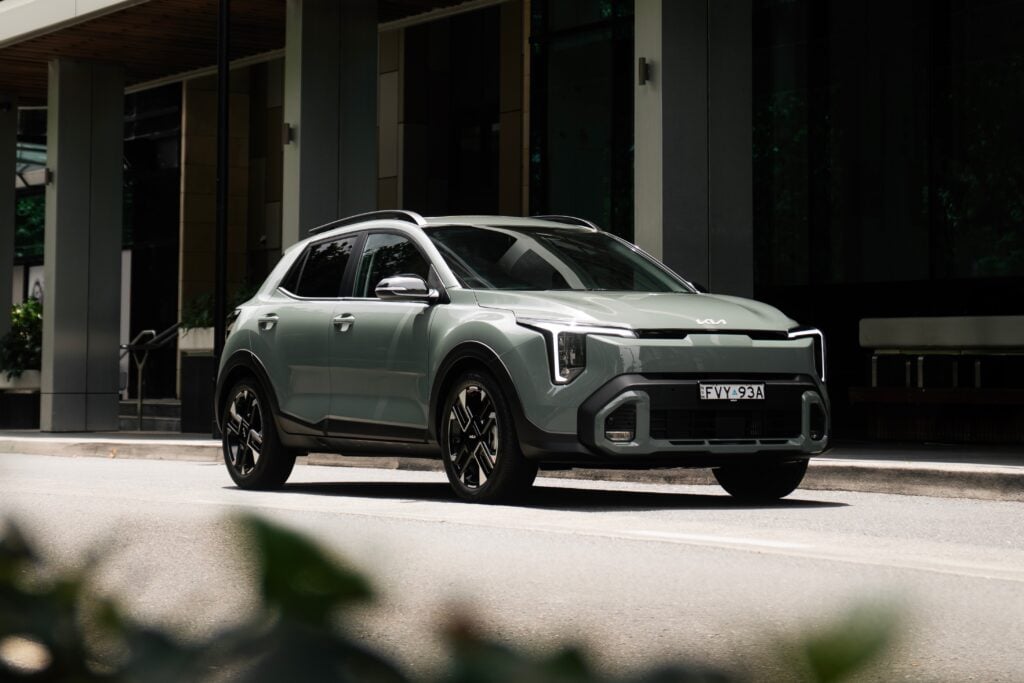Aston Martin has given us a taste of the turbocharged DB11 – the low-slung coupe that will carry the British marque into the future.
WHAT IS IT? Aston’s new grand tourer, and possible saviour of the company, sampled here in prototype form. The Aston Martin DB11 gets a new turbocharged V12 engine that gives it a serious performance boost over the outgoing DB9 and will follow its predecessor into the luxury Grand Tourer category. We drove a late prototype at Bridgestone’s testing facility near Adria in Italy ahead of sales starting later this year.
WHY WE’RE TESTING IT This is the car that will make or break Aston, its success necessary to return the British sportscar maker to the sales volumes it enjoyed before the 2008 global financial crisis. The turbocharged engine is the real news here; Aston has never produced a turbocharged road-going model before, with the V12 boasting 447 kW and 700Nm of torque.
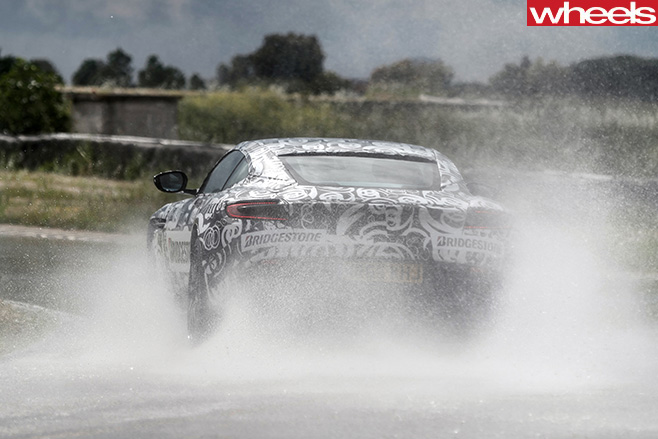
THE WHEELS VERDICT It’s too soon to start awarding gongs, but on first impressions the DB11 looks to be exactly the car that Aston needs to revive its flagging fortunes. It’s more muscular and faster than the DB9, but the extra power and performance hasn’t come at the expense of the driving experience. The prototype was as ratty as development cars tend to be, but it was good enough for us to say we’re very much looking forward to the real thing.
PLUS: Effortless performance of turbo V12, easy to drive quickly, fun when you want MINUS: Slow reacting gearbox in manual mode, shonky build on prototype
THE WHEELS REVIEW THIS isn’t an exhaustive review of the new Aston Martin DB11, rather a drive in a prototype. Lots of questions about Aston’s new hope will remain unanswered until we drive it somewhere other than a test track, and in its final production form. But our first spin has given plenty of reasons to be optimistic that, after some tough times, the British sportscar maker is heading towards a brighter future.
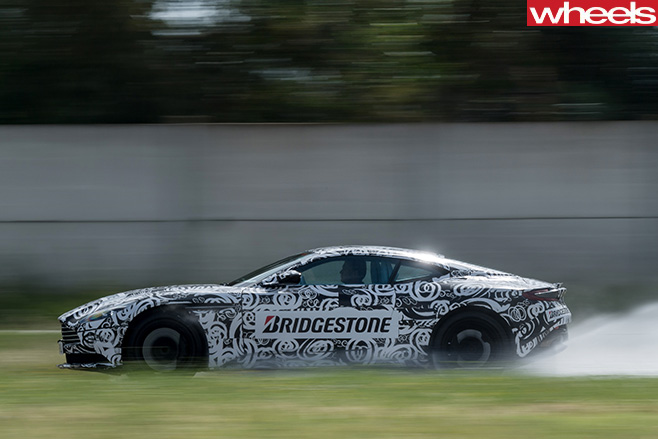
Manufacturers often invite journalists to drive prototype vehicles that, when viewed up close, turn out to be anything but – hand-constructed one-offs that show future models in the best possible light while still allowing the maker to say “we’re planning to change that” to anything we don’t like.
So it’s credit to Aston for letting us have a crack in what we have absolutely no doubts is a hard-working DB11 development hack, complete with peeling dazzle disguise and a fug of engineer’s sweat in the cabin. I’ve come to the Bridgestone test track near Adria in Italy, with Aston’s chief chassis engineer Matt Becker on hand to show what the car can do and then answer questions when I take a turn.
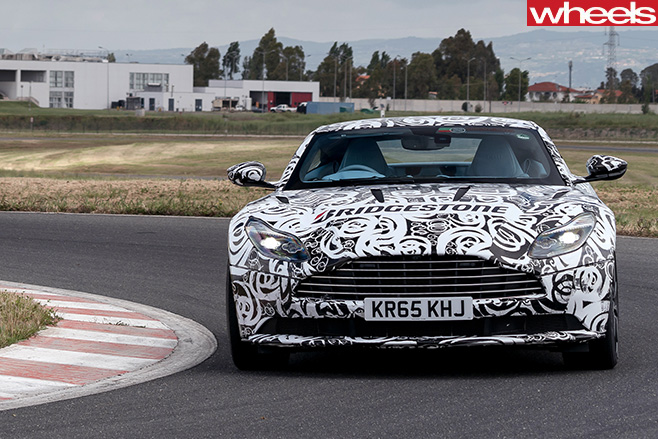
The arrival of forced induction is the biggest single change over the previous DB9 and its sonorous atmo V12. The DB11’s twin turbocharged V12 was developed by the company and loses some displacement over the DB9’s 6.0-litre unit, dropping to 5.2L in size. But it’s well up on power with 447kW compared with the 9’s 385kW. Power is less than half the story, though – the new motor has vastly more torque, 700Nm, with that peak available from just 1500rpm (the DB9’s 620Nm came at a peaky 5500rpm.) The most pressing dynamic question is whether the chassis will be able to digest that with an Aston-appropriate level of finesse, especially as – unlike Ferrari’s turbo V8 – the Aston V12 doesn’t inhibit its torque output in lower gears.
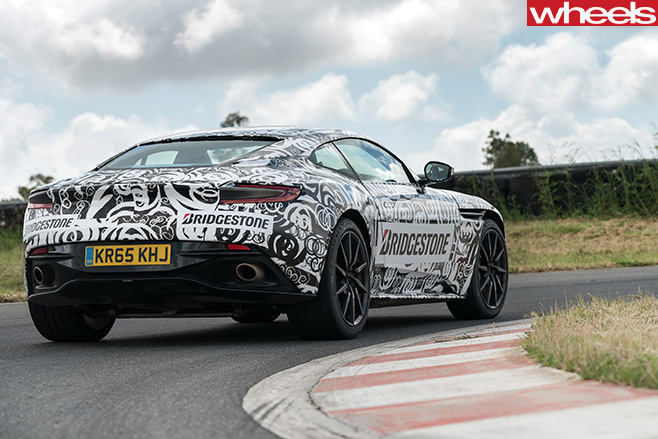
Time to find out if that’s true. Much of the view from the driver’s seat is familiar – the DB11 shares the same low seating position and high glassline as every modern Aston, and there are still P, R, N and D buttons on the dashboard instead of a traditional gear selector. But a fair bit is completely new, including the presence of a single Mercedes control stalk for both wipers and indicators, an indication that – under the surface – the DB11 and all Aston’s future models now run Daimler’s electrical architecture. I also notice that the prototype’s key is a Mercedes one, complete with a three-pointed star…
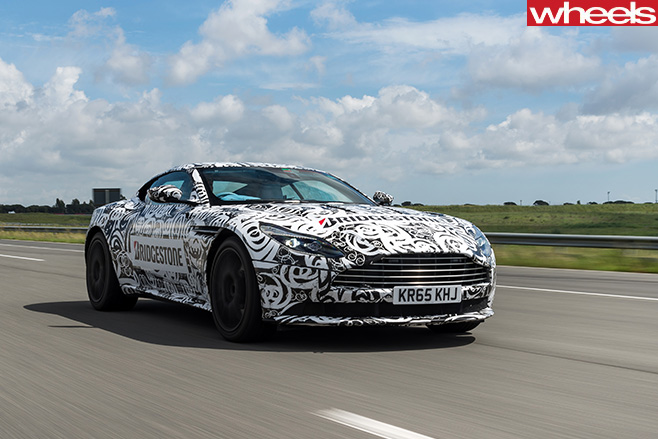
More impressive is the way the DB11’s chassis deals with all the power and torque that needs to get to the tarmac through the rear wheels. There’s a huge amount of grip but the DB11 doesn’t feel inert or over-tyred, despite the gumball profile of its Bridgestone Potenzas. The steering has switched to electrical power assistance, with Becker admitting that tuning it to feel like Aston’s previous hydraulic rack was one of his team’s biggest challenges, and one that, on first impressions, they seem to have pulled off. There’s something Lotus-like in the linearity of the DB11’s responses as well.
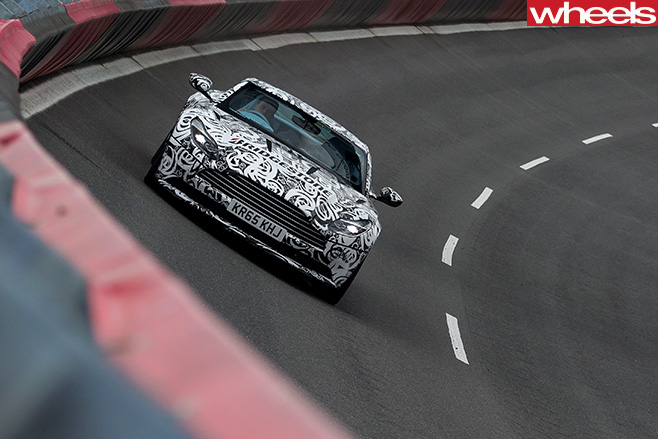
My only real complaint after a solid 20 minutes of lapping the track is the eight-speed autobox’s tardy upshifts when switched to manual mode, with a distinct pause between pulling the steering wheel paddle and feeling the next gear arrive. Becker says this will be tightened up by production, and also that the stroke of the paddles is going to be reduced to sharpen it further.
Finally, a turn on Adria’s wet handling circuit, on which sprinklers soak special low-grip tarmac to deliver surface friction that’s not much higher than it would be on snow. Even the DB11’s trick stability control can’t magic adhesion out of this slick surface, with the back axle wriggling and squirming even under gentle throttle applications as the turbocharged torque arrives. Switching the stability to its more permissive sport mode allows some proper slip-sliding, with the big Aston staying predictable even as its limits are transgressed. With the ESC fully deactivated the DB11 becomes a drift machine, with Becker happy to demonstrate that – with the right level of talent – the DB11 can do almost an entire lap while travelling sideways.
This has been a first taste, definitely an amuse-bouche rather than a full assessment. We’ll have to wait for the answers to many questions, including all those about how the DB11 deals with the challenges of the real world. But the good news for now is that the turbocharged engine seems to be a stormer and that the DB11’s chassis is more than up to handling the extra performance it brings. It’s definitely still a grand tourer rather than an out-and-out sportscar, but the omens for both the production version, and the numerous other car that Aston will spin from the same architecture, are promising.
SPECS Model: Aston Martin DB11 prototype Engine: 5204cc V12 dohc, 48v, twin-turbo Power: 447kW @ 6500rpm Torque: 700Nm @ 1500-5000rpm Transmission: 8-speed automatic Weight: 1770kg (mfr claim, dry) 0-100km/h: 3.9 sec (claimed) Fuel economy: TBC Price: TBC On sale: Q4 2016





